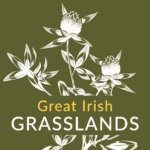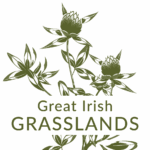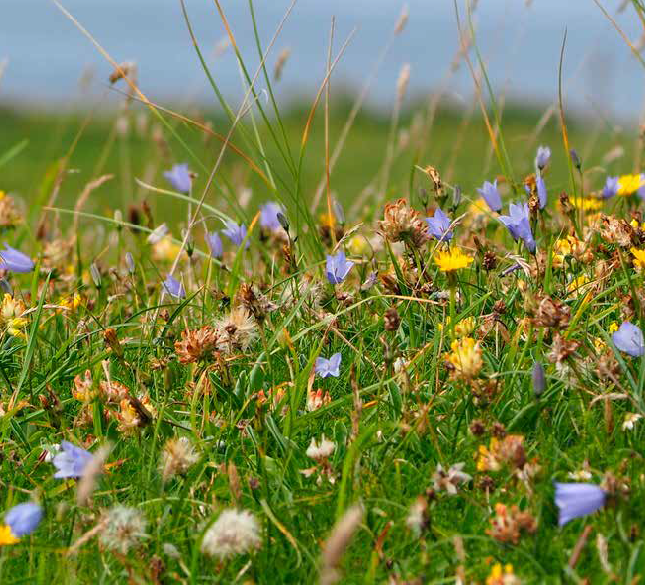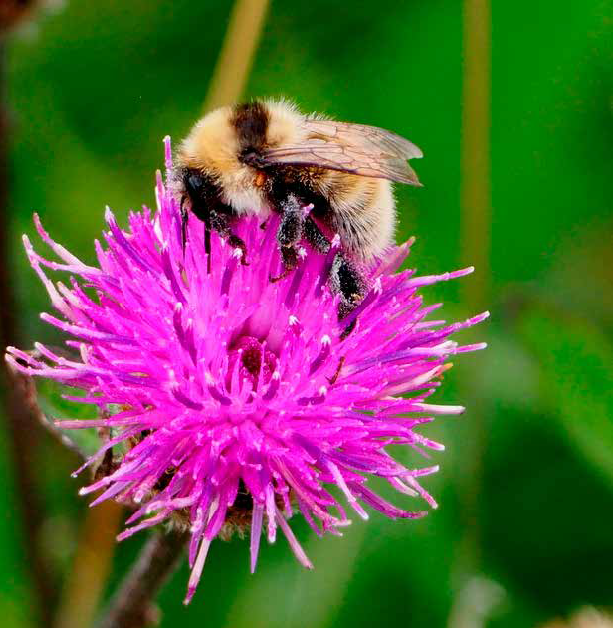The walk goes through an area of machair grassland. Machairs are coastal plains derived from wind-blown sand, and are known in some areas as sandybanks. The soil underpinning these grasslands has a significant percentage of shell-derived material, and while generally flat, they can have undulations and wet hollows too. The habitat has developed in close association with farming, with winter grazing allowing flowers to thrive.
Flora species vary from field to field and over the seasons. In spring, drier areas include species like Common Bird’s-foot-trefoil and Kidney Vetch. By summer these areas support Wild Thyme, Lady’s Bedstraw, eyebrights, Cat’s-ear, Yellow-Rattle and Red Bartsia, and toward late summer some sites have Harebell and many support Common Knapweed. Clovers are also important, with Red Clover providing splashes of colour in late spring. Orchids can be found in the damper patches.
The abundance of flowers supports a wide range of insects, including the rare Great Yellow Bumblebee and the Red-shanked Bumblebee. Machair also supports breeding waders such as Lapwing. There are good populations of Irish Hare. Some farmers in the area are currently working with Life on Machair, an EU-funded project which works with farmers, landowners and local communities with a view to protecting and restoring machair systems.



